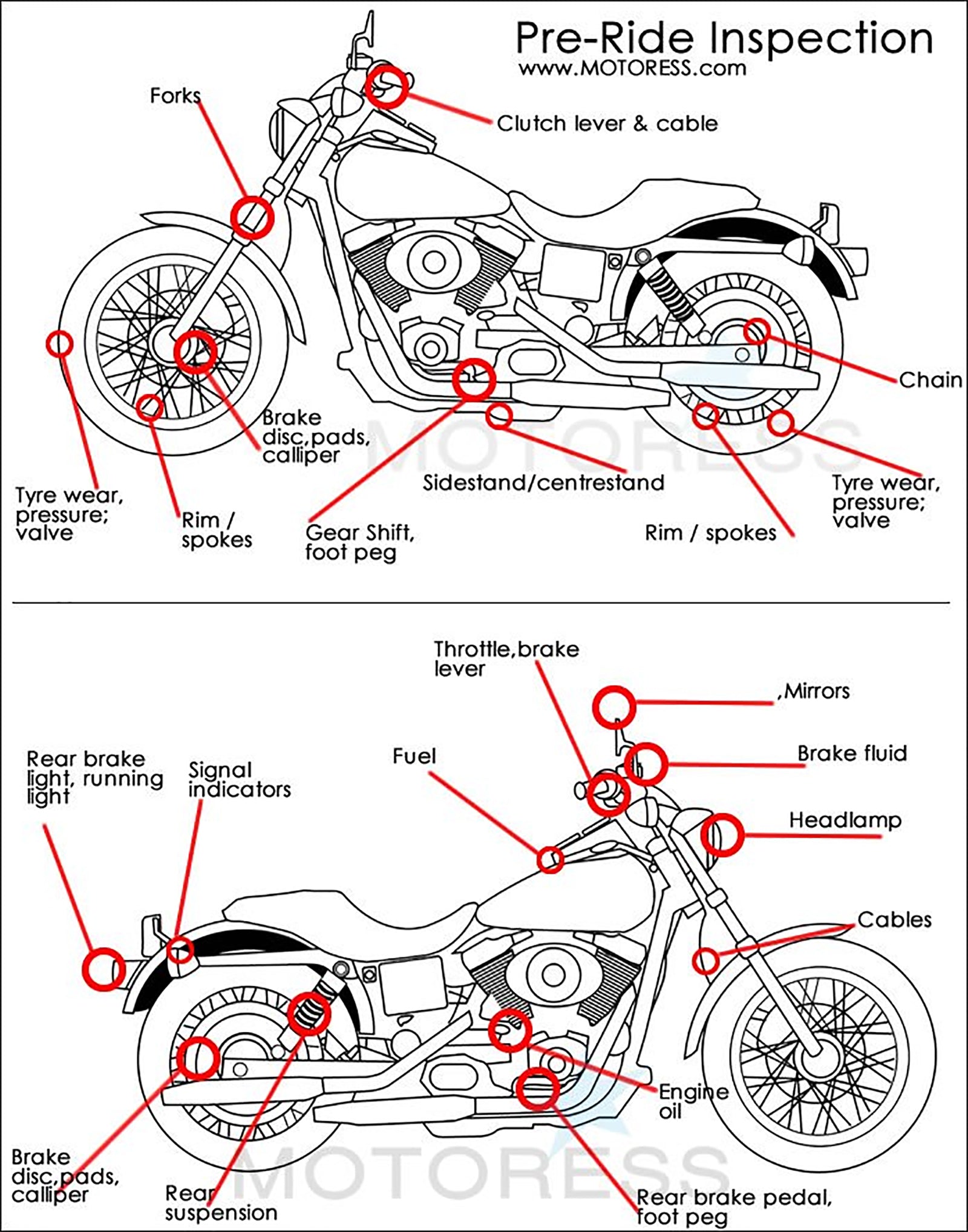Holiday Gift Guide - Clothing & Gear Up to 75% Off! SHOP NOW
The standard rule of any motorcycle rider’s safety is to ensure a safe ride, every ride. And one of the key factors to that is making certain your motorcycle or scooter is in the best condition for the ride.
Whether parked for a few hours or a few weeks, it is very important to take the time before each ride to check its condition and look for problem areas. A motorcycle pre-ride inspection is just one of the methods to managing your risks and reducing them. By doing a pre-ride inspection you can discover a problem before it’s happened and take care of it right away. Just follow the steps below.
Whether parked for a few hours or a few weeks, it is very important to take the time before each ride to check its condition and look for problem areas. A motorcycle pre-ride inspection is just one of the methods to managing your risks and reducing them. By doing a pre-ride inspection you can discover a problem before it’s happened and take care of it right away. Just follow the steps below.


Simplest method is to walk around your motorcycle and give it the once-over with your eyes and hands. Starting at your left side and at the side stand and walk clockwise. The motorcycle pre-ride inspection only takes a few minutes and can point out little problems that could turn into some major ones before they do.
Give your motorbike another once-over after you’ve parked it and turned it off. Use your eyes and hands as you did before the ride, checking for anything that may have come loose or started leaking.
While your motorcycle is still warm lubricate your drive chain, if you have one and especially if you’ve been riding in the rain. The chain is always greased when warm allowing for the lubricant oils to stay gooey and soak into the chain rather than coagulating in globs just to fly off on your next ride. And this usually means gobbing onto the sidewall of your tire! along with this, be sure to check your chain tension once again.
When the engine has cooled, give your bike a wash. This is a good time to further inspect your motorcycle for loose bolts, fasteners, fairings, leaks or broken parts.
Source: motoress.com
What does it take to be the world's fastest motorcycle? Two Suzuki Hyabusa engines and ...
Always work out your exit strategy before entering the sea. At most beaches this will b...
The back story of America’s latest Grand Prix star; KTM’s Moto3 fightback and why Ducat...
*Your wish list is temporary to this session and not permanently saved

